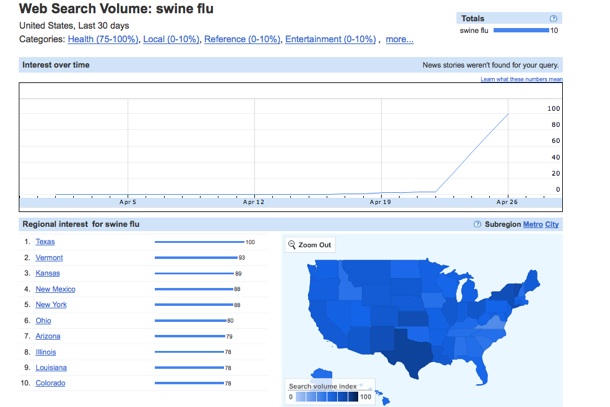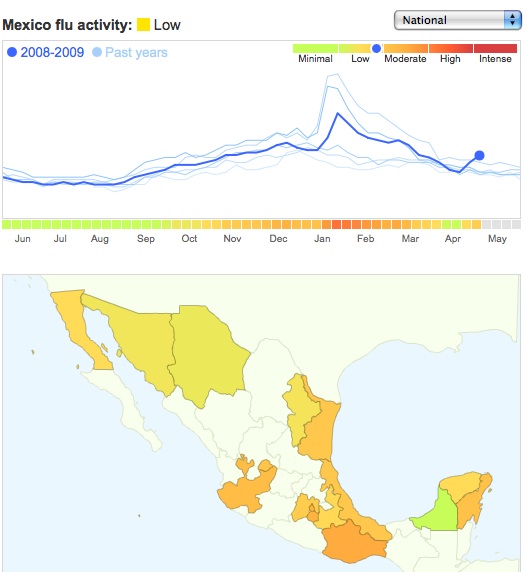
One way to possibly track the spread of the swine flu is to look at where spikes in search activity around related terms is occurring. Google already does this with its Google Flu Trends, and has now extended that analysis on an experimental basis to Mexico with a site it just put up called Experimental Flu Trends For Mexico. These maps represent Google’s estimates of actual flu outbreaks based on correlations between search activity and how many of those people are really sick.
This could prove to be an early warning system. Last week, Google detected spikes in flu-related searches in Mexico City, for instance. The darker the region, the more flu search activity is being detected (see map below).
Both Google Flu Trends and the experimental site for Mexico filter out searches that are not consistent with people looking for information about the disease. A broader analysis on the term “swine flu” can be found on Google Insights for Search, which shows the rise in that search term’s popularity over the past few weeks, along with the states where the most search activity is happening. (See map above). This method is less likely to be predictive of the actual spread of the disease because it just measures raw searches.. Nevertheless, the top ten states where people are searching for the term are:
1. Texas
2. Vermont
3. Kansas
4. New Mexico
5. New York
6. Ohio
7. Arizona
8. Illinois
9. Louisiana
10. Colorado
If you click on each state, you can see the top ten cities where searches for “Swine flu” are occurring. For instance, in Texas, San Antonio is showing the most searches. In New York, surprisingly enough, it is not New York City, but Binghamton. These rankings are indexed, however, so it could just be a measure of the relative panic in each city. Compare this to the map showing where people are discussing swine flu on Facebook, where California registers strongest after Texas and Kansas barely at all.
